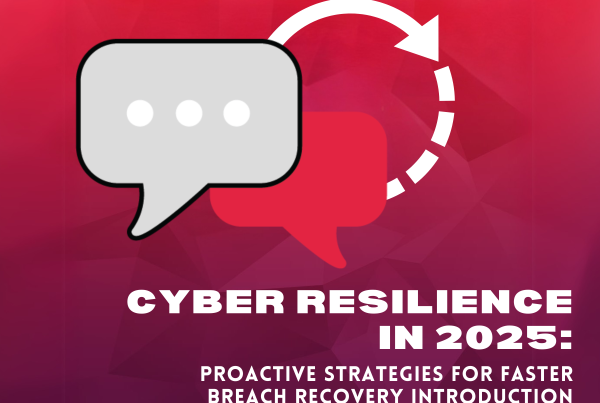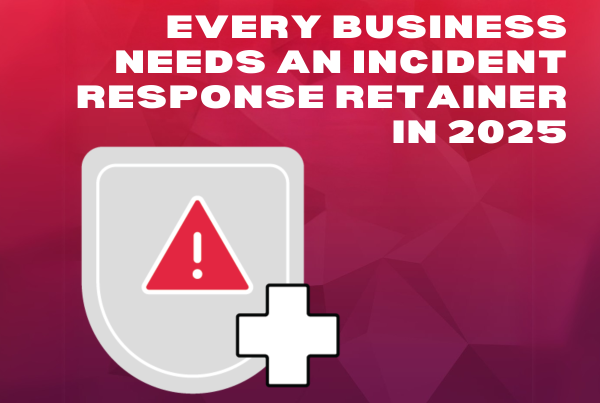Introduction
Containing a cyber attack is only the first battle. Once systems are secured and the immediate threat is neutralized, organizations face the far more complex challenge of restoring operations, meeting regulatory obligations, and ensuring the same attacker cannot return. Many companies fail at this stage. They rebuild systems too quickly, overlook critical forensic evidence, or delay mandatory breach notifications. The result is extended downtime, financial losses, and long-term damage to customer and stakeholder trust.
True recovery requires more than IT cleanup. It demands a structured approach that balances technical restoration, legal compliance, and business continuity planning. IPV Network specializes in guiding organizations through this high-risk phase, helping them transition from crisis to stability while protecting regulatory standing and reputation.
II. The Hidden Costs of Poor Post-Incident Recovery
When organizations focus solely on stopping an attack without planning for recovery, they leave themselves exposed to further losses. Industry research shows that businesses mishandling the recovery stage face post-breach costs up to 40 percent higher than those with structured plans. These costs are not limited to system repairs; they extend into operational disruption, legal penalties, and reputational harm that can last for years.
A common mistake is rushing system rebuilds without understanding the root cause of the breach. Without a thorough forensic investigation, attackers may still have hidden backdoors or compromised accounts. Rebuilt systems can be reinfected, leading to a second, often more damaging attack.
Regulatory compliance is another major risk. Many jurisdictions require organizations to notify authorities and affected customers within specific timeframes after a breach. Failure to meet these deadlines results in heavy fines and can escalate into litigation. Poor documentation during recovery complicates these obligations, leaving companies without defensible evidence of containment or remediation efforts.
Reputation damage is equally costly. Customers and partners expect clear, honest communication about incidents. Mishandled messaging or long service outages erode confidence, drive churn, and open doors for competitors to capture market share. Inadequate recovery planning often leads to communication missteps, further magnifying post-incident fallout.
III. Core Principles of Effective Post-Incident Recovery
Successful recovery from a cyber incident requires structured, methodical actions that address both technical and business needs. Four critical principles help organizations move from containment to stability without leaving vulnerabilities unaddressed or failing compliance obligations.
1. Forensic Investigation and Root Cause Analysis
Recovery cannot begin until the cause of the breach is fully understood. A forensic investigation preserves digital evidence, reconstructs the attacker’s actions, and identifies vulnerabilities exploited during the incident. Without this analysis, organizations risk restoring compromised accounts, leaving hidden malware in backups, or missing signs of insider involvement. A complete attack timeline informs safe system restoration and supports legal or regulatory inquiries.
2. Secure System Restoration
Restoring operations is not as simple as reinstalling software or reimaging devices. Secure recovery requires validated, uncompromised backups, segmentation to prevent cross-contamination, and rigorous testing before systems are brought back online. Recovery workflows should prioritize critical business functions first, using hardened system images and controlled reintroduction to avoid further disruptions.
3. Regulatory and Legal Compliance
Post-incident recovery must align with complex reporting requirements. Depending on industry and geography, organizations may have hours or days to notify regulators, customers, and partners about a breach. Missing these deadlines or providing incomplete information can result in fines and lawsuits. Integrating compliance guidance directly into the recovery process ensures that forensic evidence supports reporting obligations and that communications are legally defensible.
4. Stakeholder Communication and Reputation Management
A cyber attack affects more than just technology as it also impacts relationships with customers, investors, suppliers, and the public. Effective recovery includes a clear communication plan to manage these relationships. Messages must be transparent, accurate, and coordinated with legal and regulatory disclosures. This helps organizations maintain trust throughout the recovery process while minimizing reputational harm.
IV. Building Business Continuity into Recovery
Containment and technical remediation alone do not guarantee that a business can continue serving customers after a cyber attack. True recovery requires planning that keeps essential services running while systems are rebuilt and security controls are hardened. Without this planning, organizations risk prolonged outages that damage revenue streams and customer confidence long after the initial breach is contained.
1. Prioritized Restoration of Critical Services
Not every system can or should be brought online at once after an incident. Recovery efforts must begin with functions that are essential to core operations, such as payment processing, customer-facing platforms, and production systems. Using predefined priorities ensures that teams focus on restoring the services that sustain business continuity before addressing secondary systems.
2. Use of Failover and Redundant Infrastructure
Organizations with failover systems and redundant infrastructure can shift operations to unaffected environments while primary systems are secured and rebuilt. Cloud-based recovery environments and geographically distributed data centers provide additional flexibility. This approach minimizes downtime and keeps customers connected to essential services throughout the recovery process.
3. Segmentation and Isolation During Recovery
Bringing systems back online without proper isolation risks reintroducing malware or opening doors for attackers still inside the network. Recovery must include strict segmentation of restored environments and multi-layered validation before systems rejoin production networks. This approach prevents reinfection and supports a more stable return to normal operations.
4. Integrating Business Continuity with Incident Response Planning
Business continuity and incident response cannot be treated as separate disciplines. Plans for operational continuity should be tightly integrated with technical recovery steps. When these plans are developed and tested together, decision-makers understand how each action affects customer services, regulatory timelines, and long-term reputation. This integration creates a more resilient recovery process that protects both technology and business outcomes.
V. Post-Incident Recovery Services
While many organizations have internal IT or security teams, post-incident recovery often requires specialized expertise and additional resources. External response partners can accelerate secure system restoration, ensure forensic evidence is preserved, and manage compliance requirements more effectively than ad-hoc internal efforts.
An expert recovery service typically provides:
- Forensic Leadership: Leading investigations to understand the full scope of an attack and prevent reinfection.
- Secure Restoration Planning: Designing workflows to rebuild systems safely and bring critical operations online first.
- Compliance and Reporting Support: Preparing mandatory breach notifications and ensuring regulators receive timely, accurate information.
- Stakeholder Communication Guidance: Helping executives and communication teams manage public messaging to protect brand reputation.
- Long-Term Resilience Building: Using lessons learned from the incident to strengthen defenses and update response playbooks.
These services give organizations confidence that recovery will be complete, defensible, and aligned with business continuity objectives. IPV Network offers this full spectrum of support, guiding clients from the immediate aftermath of an attack through strategic, compliant recovery.
Conclusion
Recovering from a cyber attack is one of the most challenging moments an organization can face. The decisions made during this stage determine whether a business returns to stability, suffers extended disruption, or faces lasting reputational and regulatory consequences.
Effective post-incident recovery is not just about removing malware or restoring servers. It requires forensic analysis, structured restoration, legal and regulatory alignment, and careful stakeholder communication. Organizations that prepare these capabilities in advance experience shorter outages, fewer financial losses, and stronger long-term resilience.
IPV Network specializes in transforming chaotic post-breach situations into structured recovery processes. With expert-led forensics, secure restoration strategies, and compliance guidance, we help businesses move from containment to continuity with confidence.
Contact IPV Network today to schedule a free 30-minute post-incident consultation and ensure your organization is ready to recover quickly and effectively from any cyber incident.
Resources:


